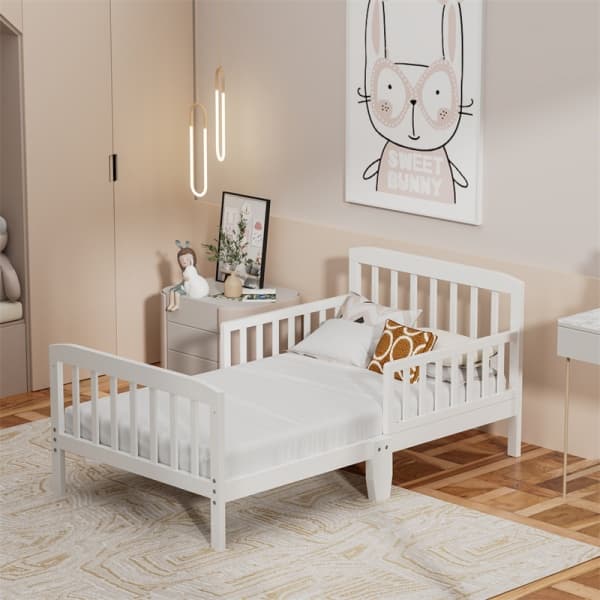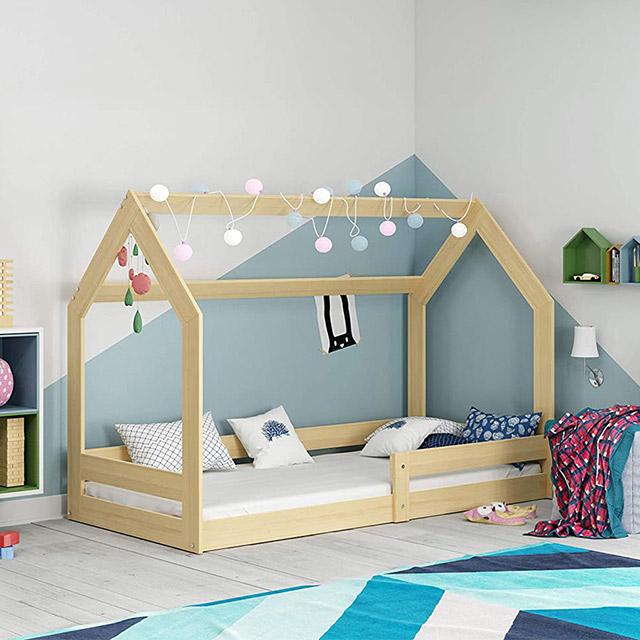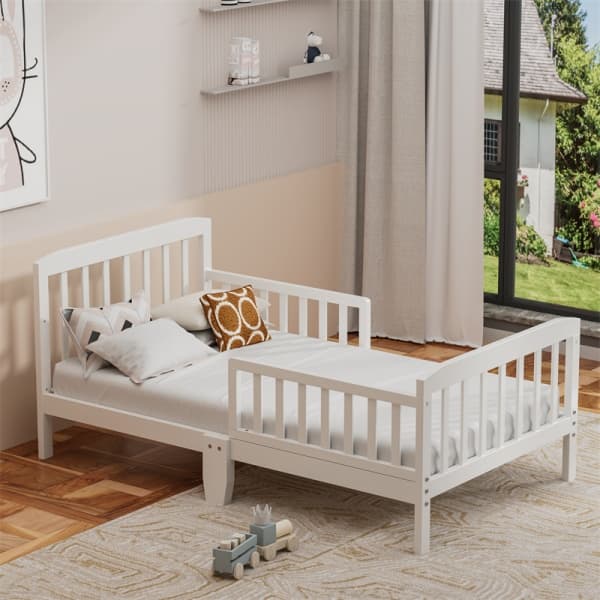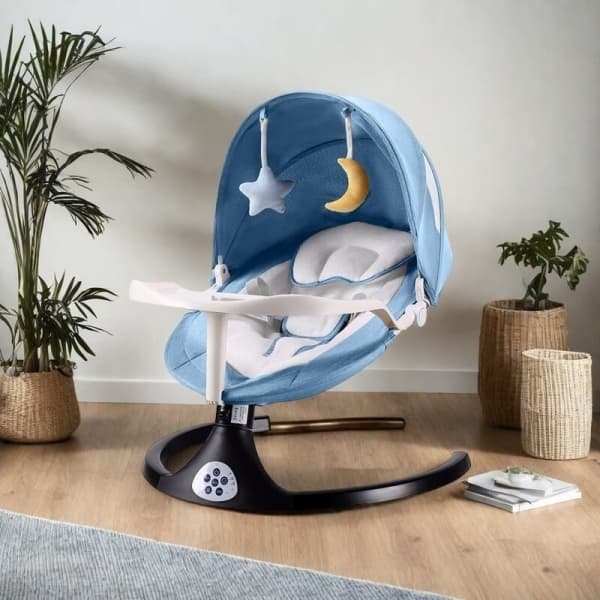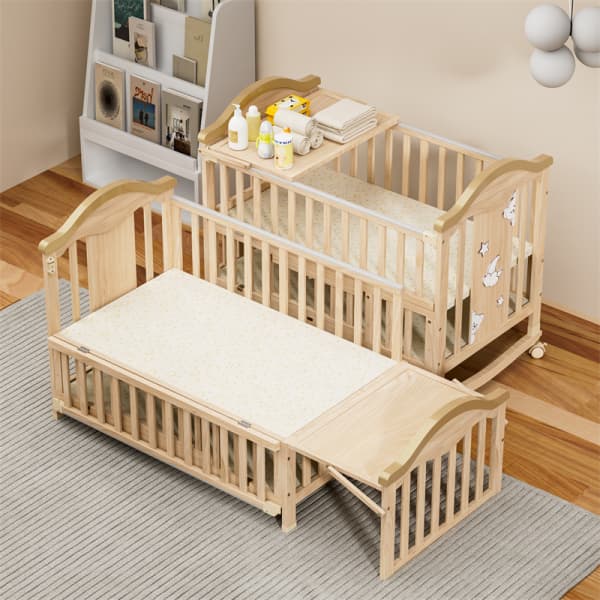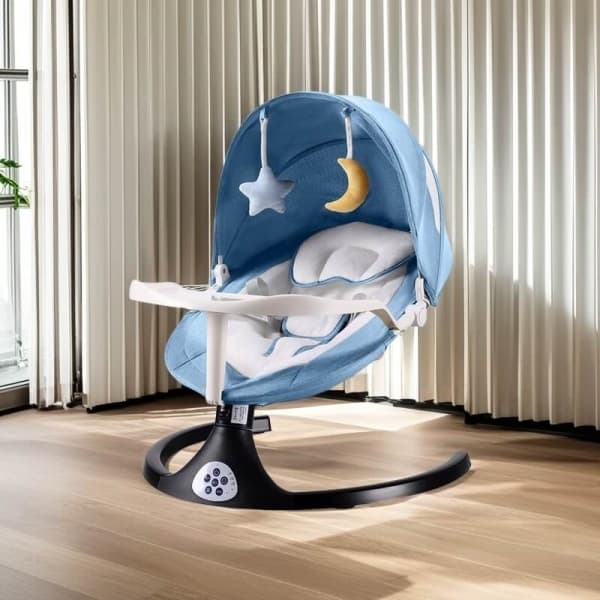As a mom, you’re constantly searching for ways to make sure your infant is comfortable while still finding time for yourself to rest and unwind. Using a bouncer seems like the ideal way to relieve your arms from rocking while attempting to put your infant to sleep.
Part of the reason why bouncers are so popular is that they tend to calm your infant. This frequently results in the query, “Can my baby sleep in a bouncer?”
In this article, we will discuss the definition of baby bouncers, safety issues related to bouncer sleep, possible hazards, and the best ways to keep your child safe.
What Is a Baby Bouncer?
A baby bouncer is a lightweight metal frame wrapped in a soft, padded cloth to form a baby chair that supports your child’s full body.
The seat is elevated from the ground by a framework that holds it in place. It has a motor that lets it rock, which calms a baby in a similar way to how it would be held in your arms. Many bouncers include additional features like toys, sounds, and lights to keep the baby entertained and engaged.
The traditional form rocks when the parents push it gently, but you can also get electric versions that rock automatically when a button is touched, calming the infant without requiring constant hand rocking of the bouncer.
With the combination of comfortable seating and gentle motion, baby bouncers help calm fussy infants, making it easy for babies to sleep. Unlike adults, newborns need up to 17 hours of sleep every day, while older babies need 12 to 16 hours.
With all the perks of a baby bouncer, some parents find themselves relying on bouncers for nap times, as the gentle rocking can lull their babies to sleep. However, while bouncers can be a useful tool for soothing babies, it is essential to understand their limitations, especially regarding sleep safety.
Is It Safe for a Baby to Sleep in the Bouncer?
A baby bouncer is an excellent way to engage and soothe your infant, but it should never be used in place of a secure sleeping space. Child safety experts advise against allowing infants to sleep in bouncers for prolonged periods of time.
Citing primary concerns listed by pediatricians such as position asphyxiation and SIDS can be associated with letting infants sleep in bouncers for prolonged periods of time.
The American Academy of Pediatrics (AAP) specifically states that infants should be placed on a firm, flat surface for sleep, such as a crib or bassinet, and that sleep environments should be free from soft bedding or toys that could pose a suffocation risk.
The flat surface also prevents the baby from rolling into soft bedding or against padded sides. Soft surfaces, such as those found in bouncers, can pose a suffocation hazard if a baby rolls or shifts during sleep.
Dr. Rachel Moon, a professor and the chair of the AAP Task Force on SIDS, emphasizes that babies should always be placed on their backs to sleep and in a safe sleep space. Since bouncers are designed with a 45-degree inclination, they do not provide the support babies need to maintain a safe sleep position.
The AAP’s Safe Sleep Guidelines state that sitting devices, including car seats, strollers, swings, infant carriers, and bouncers, are not recommended for routine sleep.
Although a bouncer could seem practical, particularly if a baby falls asleep while being calm, it’s important to move them to a safer sleeping space as soon as they start to appear sleepy. This measure ensures that babies are secure while they sleep by averting possible risks and adhering to safe sleep recommendations.
Risks of Letting Babies Sleep in a Bouncer
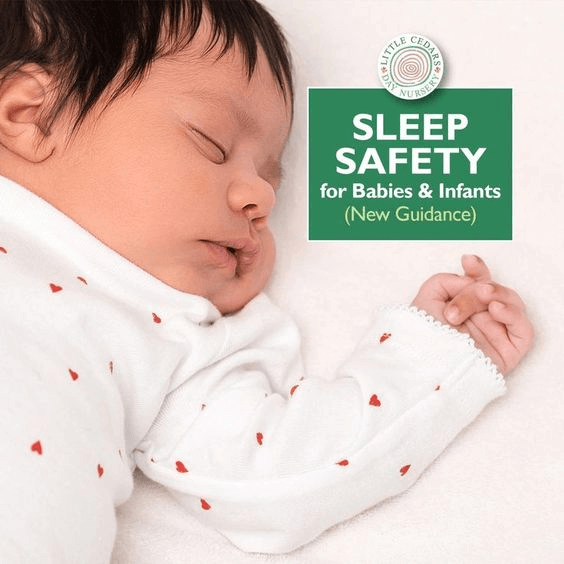
Babies shouldn’t sleep in bouncers because doing so can be risky and raise the possibility of:
1. Positional Asphyxiation
Babies that suffer from positional asphyxia are unable to breathe because their body position obstructs their airway. This can occur because babies’ heads can easily flop forward in a bouncer due to the decreased neck muscle control and strength between 0 and 4 months.
2. SIDS (Sudden Infant Death Syndrome)
Bouncers have a semi-upright creation that puts babies at an angle that could make it difficult for them to breathe as they sleep. To reduce this danger, the American Academy of Pediatrics (AAP) strongly advises that babies sleep on a level, firm surface.
3. Accidental Suffocation
If left alone, infants may roll from their back to their side or stomach. Unrestrained infants who roll from their back to their stomach or side, or who use bedding or blankets face the risk of suffocating from the bedding items.
4. Developmental Concerns
A baby’s freedom of movement is restricted by bouncers. Long periods spent in a bouncer can limit the movement and natural muscle use required for normal physical growth.
5. Strangulation
A baby bouncer’s straps may potentially cause issues. Straps are typically included with baby bouncers so that your child can be securely fastened in as they bounce. However, a newborn could tangle with the straps if they are left unattended.
6. Risk of Falling
Babies are more likely to fall from a bouncer as they get older and more active, particularly if they are left alone or the bouncer is set up on an elevated surface.
7. Overheating
If the infant is wrapped in garments or blankets, the bouncer may retain heat. Another risk factor for SIDS is overheating, making it harder to maintain a safe body temperature for the baby. Therefore it’s imperative that parents keep an eye on their baby’s surroundings.
How to Prevent a Baby from Falling Asleep in a Rocking Chair?
The most effective way to prevent your baby from falling asleep in the bouncer is to transfer them to a safe sleep environment before they become sleepy and fall asleep.
This means being proactive and recognizing the signs that your baby is getting sleepy. Below are some signs that indicate your baby is tired or ready to sleep:
- Tugging on the ears
- Clenching fists
- Becoming fussy
- Clinginess
- Crying
- Yawning
- Crossed eyes, fluttering eyelids, trouble concentrating, or gazing into space
- Arching backward or jerking with the arms and legs
- Frowning or displaying concern
- Sucking on your fingers could be a positive indicator that your infant is attempting to find a way to fall asleep.
When your child is ready to sleep and move from a bouncer to a crib, it’s important to set up a space that will allow them to sleep comfortably and safely. Blackout curtains are one approach to improve your baby’s sleeping environment since they offer the perfect amount of darkness for their sleep schedules.
Create a consistent bedtime routine to help signal to your baby that it’s time for sleep. Include calming activities like reading a story or singing a lullaby to gently prepare your baby for rest in their designated sleep area.
This is commonly referred to as sleep training creates a routine for the baby, that creates room for you as a mom to transition the baby from the bouncer to a crib for a safer sleeping environment.
What to Do if Baby Falls Asleep in a Bouncer?
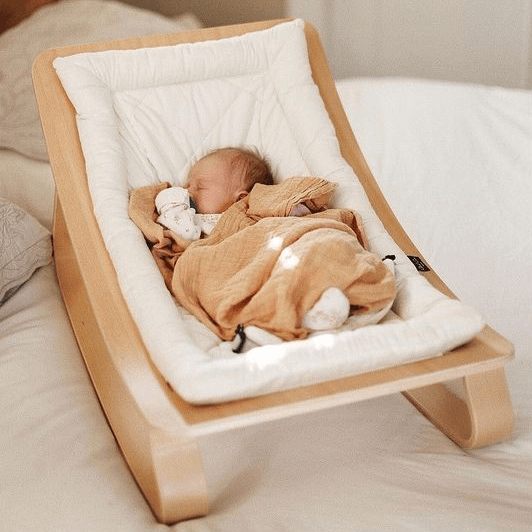
If your baby falls asleep in a bouncer, you should gently and quietly move them to a firm, flat sleeping surface, such as a crib or a co-sleeper, for a safer sleep environment. Whilst your baby may appear cozy and comfortable on the bouncer, it is not the safest place for them to nap.
The following tips will help ensure a safe and easy transfer with the least amount of possibility of waking your infant:
- Prepare the sleep environment: Ensure the crib or bassinet is ready, with a firm mattress and fitted sheet, free from loose bedding, pillows, toys, and other soft items.
- Approach quietly: Don’t make abrupt moves; instead, move slowly. Be calm as you approach the bouncer, being careful not to create any noise that might wake your baby.
- Lift your baby gently; Unbuckle any harness straps gently without jarring your infant too much. As you remove them from the bouncer, support their head and neck. This is crucial, especially for younger infants, to prevent any jerky movements that could disturb their sleep.
- Lower gently: Keep supporting your baby’s body while you lower them into the bassinet or cot. Make sure their head and neck are properly supported as you gently lower them onto the mattress.
- Maintain a Calm Environment: To prevent your baby from being startled awake, keep the environment calm and well-lit. Use quiet music or white noise if you can to keep the atmosphere calm.
- Lay the infant on their back: Place your infant in the bassinet or cot on their back. This position lowers the risk of SIDS and is the safest for sleeping in.
- Provide Solace When Needed: During the transfer, if your baby wakes or stirs, softly touch them or shuffle them to help them go back to sleep.
- Monitor: Make sure your baby is comfortable and sleepy by watching them for a few minutes after the transfer.
Frequently Asked Questions
Q: How Long Can You Leave a Baby in a Bouncer While Awake?
Typically babies should only spend 10 to 30 minutes in the bouncer when awake, but this should be monitored closely.
Q: When to Stop Using a Baby Bouncer Altogether?
After your baby reaches the manufacturer’s weight restriction, which is typically approximately 20 pounds or 9 kilograms, or when they are able to sit up on their own and try to climb out, you should cease using a baby bouncer. The chance of toppling over at this point becomes considerably high.
Q: Is It Okay for My Baby to Nap Briefly in a Bouncer if I’m Watching Them?
Your infant shouldn’t sleep in a bouncer, even if you’re watching them. Accidents can occur subtly and rapidly. Moving your infant to a suitable sleeping environment as soon as they show any indications of drowsiness is the safest course of action.
Q: What Should I Look for in a Baby Bouncer to Ensure It’s as Safe as Possible?
Make sure the bouncer has a sturdy frame and safety harness, and look for it with a safety certification.
Q: Are There Specific Types of Bouncers That Are Safer for Sleep?
Regardless of its features or design, no bouncer is deemed safe for a baby to sleep in. All bouncers should only be used under supervision when the infant is awake.
Conclusion
Safety should always come before convenience, even if it can be tempting to let a sleeping infant lay, especially when they’ve finally fallen asleep after much rocking and bouncing.
Your attentiveness and compliance with safe sleep practices support your infant’s healthy growth and give you comfort while you deal with the rewards and difficulties of parenthood.
Please contact Clafbebe Children’s experts to learn more about baby bouncers. We are a manufacturer of baby products with more than 20 years of experience, committed to providing affordable products with high quality to families around the world.
Recommended Related Articles:



